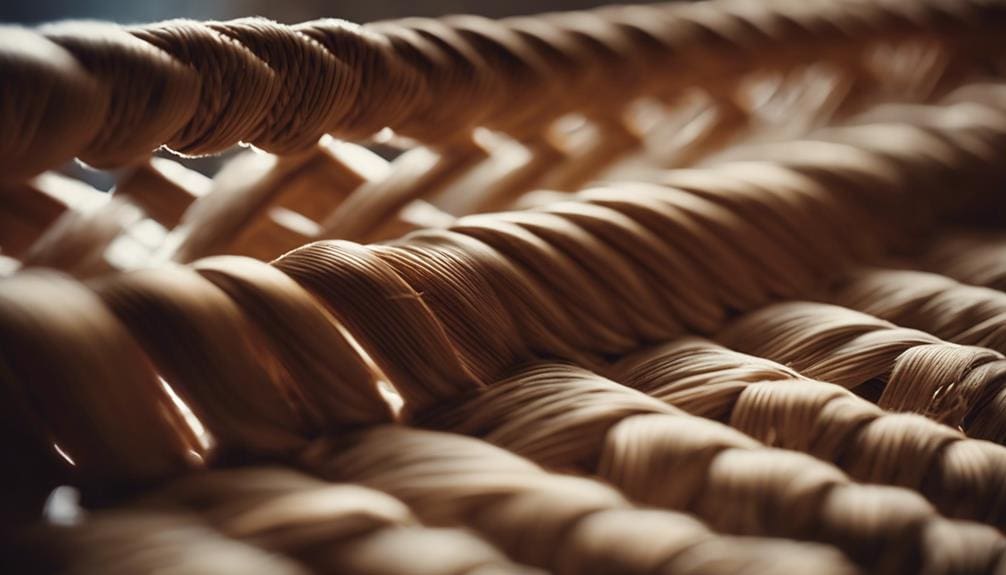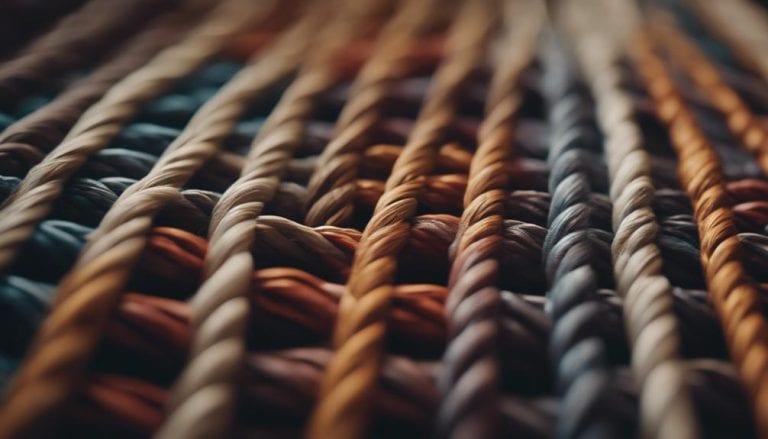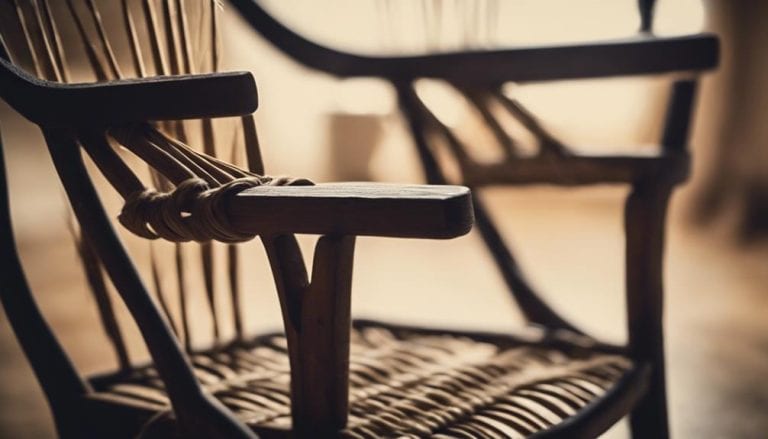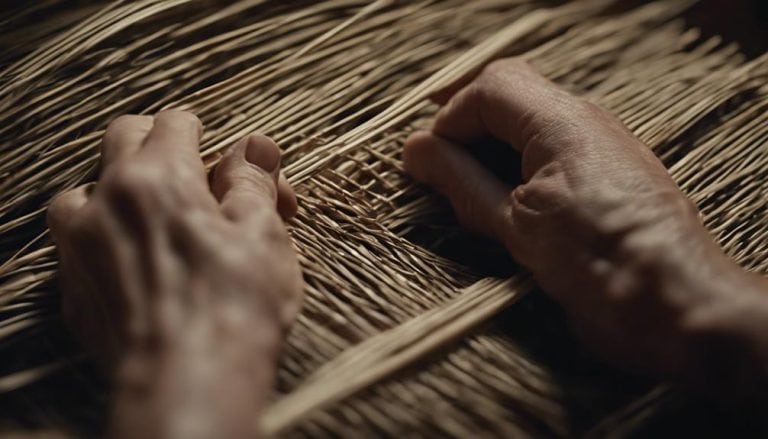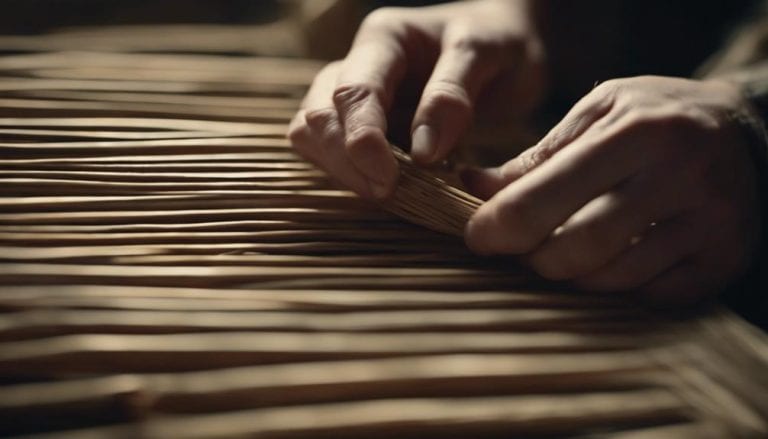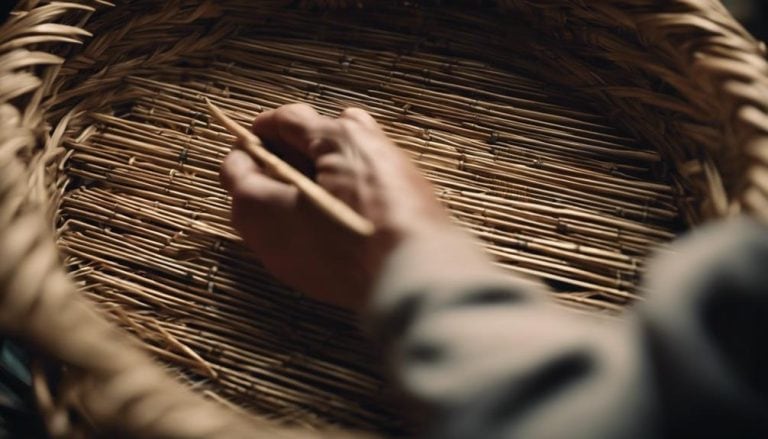Making Furniture With Danish Cord
Weaving Danish cord into furniture pieces is a meticulous art form that requires patience and precision. The intertwining of fibers creates a unique texture and strength that sets Danish cord furniture apart.
The process of incorporating this material into your designs opens up a world of possibilities, blending tradition with modern aesthetics. The satisfaction of completing a piece that not only showcases your craftsmanship but also stands the test of time is truly unparalleled.
In the world of furniture making, Danish cord presents a challenge worth embracing for those seeking to elevate their craft to new heights.
Key Takeaways
- Danish Cord offers timeless elegance, durability, and sustainability for furniture making.
- Utilize specific tools and materials like Danish nails and high-quality cord for weaving.
- Follow precise techniques and preparation for weaving Danish Cord with traditional basket weaving methods.
- Maintain Danish Cord furniture by regular cleaning, conditioning, and prompt repairs for longevity and sustainability.
Benefits of Using Danish Cord
Danish cord, with its timeless elegance and unparalleled durability, stands as a cherished choice among furniture artisans and enthusiasts alike. The durable nature of Danish cord, woven from twisted paper coils, ensures that furniture pieces featuring this material boast longevity beyond compare.
Renowned designers such as Hans Wegner and Finn Juhl propelled Danish cord into the spotlight during the mid-century Danish furniture movement, showcasing its sustainable and natural essence. The intricate weaving techniques employed in working with Danish cord not only enhance its visual appeal but also contribute to its robust structure, making it a preferred option for chair seats and backrests.
Its inherent resistance to wear and tear sets Danish cord apart, guaranteeing that high-quality pieces can withstand the test of time, becoming cherished heirlooms that span generations. In the realm of furniture construction, the utilization of Danish cord heralds a commitment to durability, sustainability, and artisanal excellence.
Essential Tools for Weaving
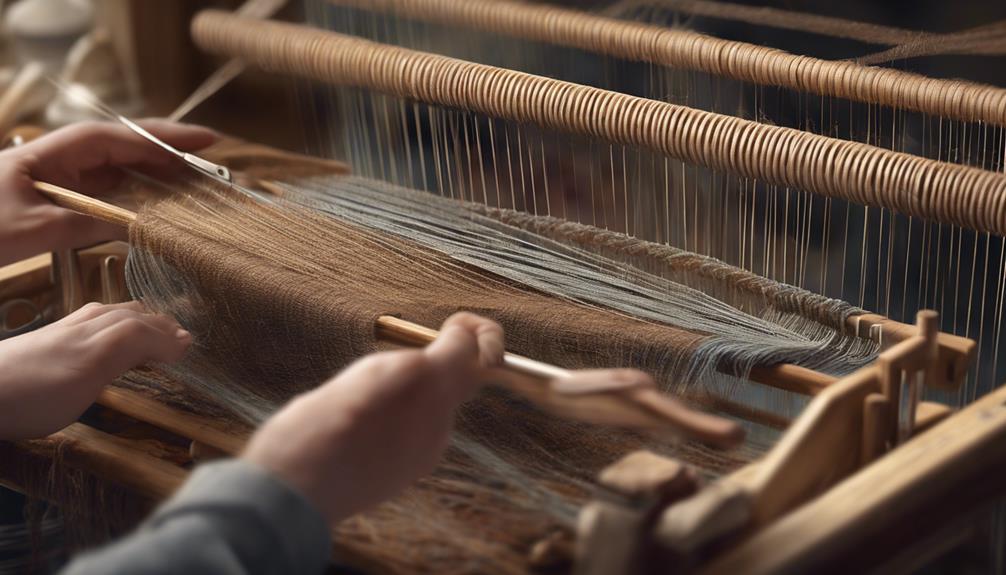
Crafting exquisite furniture pieces with Danish cord necessitates the adept utilization of specialized tools essential for weaving intricate patterns and securing the cord in place. Danish nails play a crucial role in anchoring the Danish cord to the chair frame, ensuring durability and strength in the final product.
When weaving the cord, a squeeze clamp becomes indispensable for maintaining tension and achieving a uniform weave pattern across the seat or side rail. To secure the cord firmly in place, a tack hammer proves invaluable, allowing for precision and control when driving in the last nail.
These tools work harmoniously to bring forth the artistry of Danish cord weaving, culminating in a masterpiece of both form and function.
Remember to use upholstery tacks judiciously to ensure every strand of Danish cord is impeccably secured, resulting in a chair that exudes elegance and craftsmanship.
Choosing the Right Danish Cord
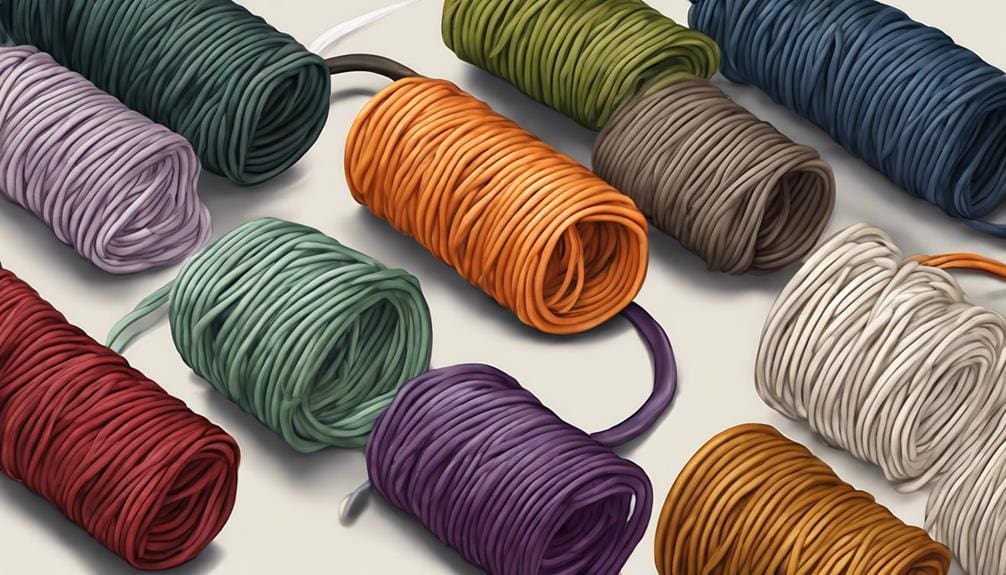
When selecting the ideal Danish cord for your furniture project, it's essential to carefully assess the thickness and color to harmonize with the overall design aesthetic. Here are some crucial points to consider:
- Quality Matters: Opt for high-quality Danish cord with a protective wax layer. This ensures durability and longevity, making your furniture piece last for generations to come.
- Sustainability Is Key: Look for Danish cord made from sustainable materials. Choosing eco-friendly options not only benefits the environment but also adds a sense of responsibility and sophistication to your creation.
- Ease of Weaving: Select Danish cord that's easy to weave and manipulate. This will allow you to create smooth and even patterns effortlessly, whether you're working on a chair seat, back rail, front rail, or any other part of the furniture piece.
Preparing the Frame
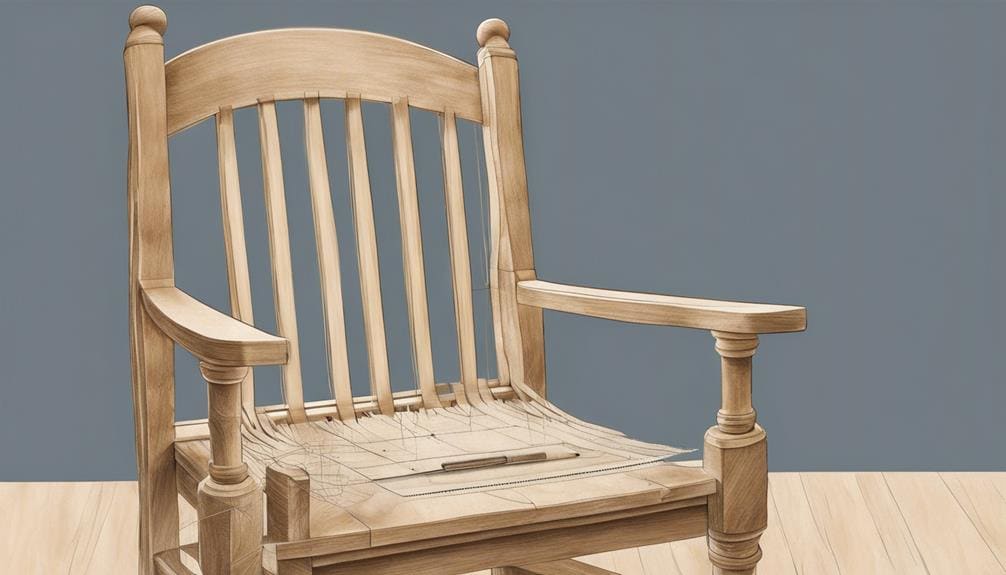
As I align the warp centerlines on the front and back rails, precision is key in preparing the frame for the intricate Danish cord weaving process. Each measurement is calculated with exacting care, ensuring that the warp cord pairs are secured at precise distances along the side rails. The symmetrical layout requires an odd number of warp centerlines, guaranteeing a balanced and harmonious weaving pattern.
To maintain consistency in the weaving alignment, I meticulously mark the centerlines on both the front and back rails, using a center nail as a guide for accuracy. This meticulous process sets the foundation for the forthcoming intricate weaving of Danish cord, where every detail counts.
Creating a template aids in the precise placement of the Danish cord, allowing for a uniform and flawless finish. The choice of Danish cord type plays a crucial role in the weaving process, offering different characteristics that influence the final look of the woven masterpiece. The frame, now meticulously prepared, stands ready to embrace the artistry of Danish cord weaving.
Techniques for Weaving Danish Cord

With meticulous attention to detail, the intricate art of weaving Danish cord involves masterful techniques that bring forth classic basket weaving patterns. When weaving Danish cord for chair seats, specific techniques ensure a strong and durable outcome:
- Danish Cord Weaving Methods: Utilizing traditional basket weaving techniques, the Danish cord is meticulously woven in a tight and secure manner to create a sturdy chair seat. The weaving process involves careful attention to detail to achieve the desired pattern and density.
- Securing with Danish Nails: Danish nails play a crucial role in securing the Danish cord to the chair frame. By using precise weaving methods and strategically placing Danish nails along the rails, the cord is firmly held in place, ensuring longevity and stability.
- Adjusting Patterns for Durability: Adapting the weaving pattern to wrap around the front and back rails of the chair helps reinforce the seat's structure. This adjustment not only enhances the aesthetic appeal but also contributes to a dense and durable woven seat that withstands daily use.
Finishing Touches and Maintenance
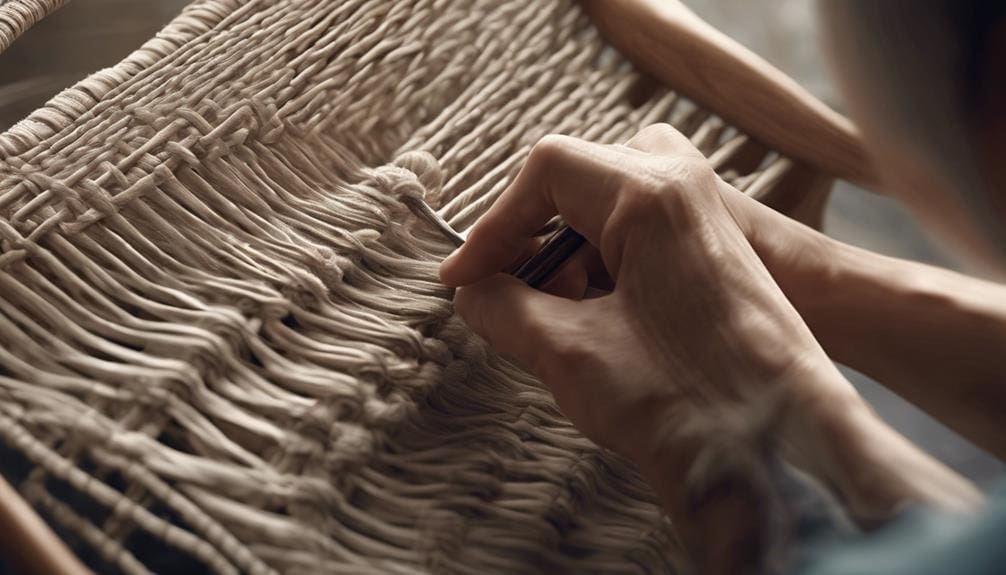
To preserve the exquisite beauty and longevity of Danish cord furniture, a gentle touch and regular maintenance are key in ensuring its enduring charm. Dusting the Danish cord seats periodically and gently cleaning them with a damp cloth will help maintain their appearance.
Applying a light coat of Danish oil or wax can protect and rejuvenate the cord, enhancing its longevity. It's crucial to avoid exposing Danish cord furniture to direct sunlight or extreme temperatures to prevent damage and fading.
Regularly inspecting the cord for any signs of wear or fraying is essential. Promptly addressing any issues can prevent further damage and maintain the furniture's quality. Professional restoration services can also assist in reweaving or repairing Danish cord seats, ensuring they remain both functional and aesthetically pleasing.
Design Inspirations for Danish Cord Furniture
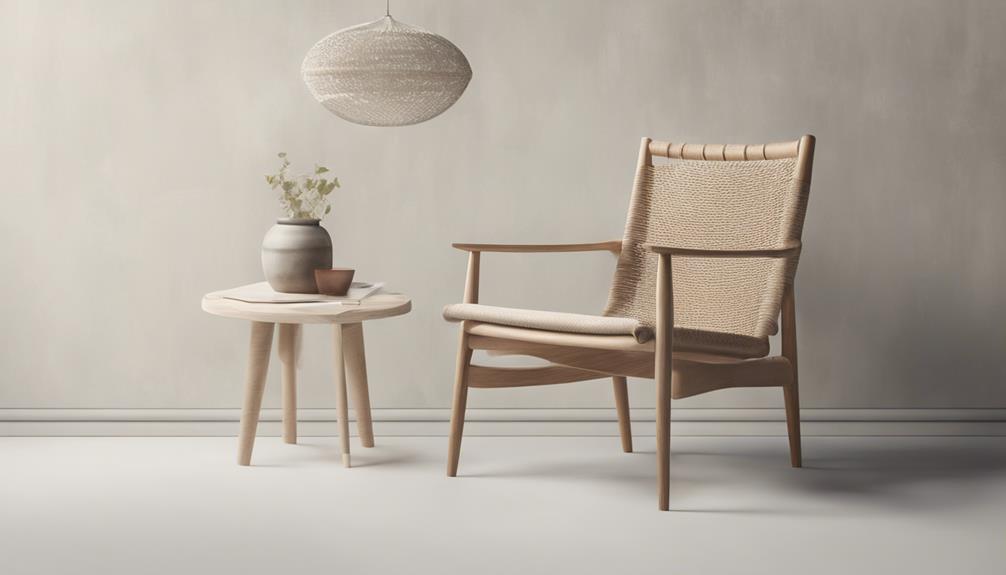
Preserving the timeless allure and craftsmanship of Danish cord furniture, the design inspirations behind each piece intricately blend mid-century Danish influences with modern aesthetics, creating truly unique and elegant furniture masterpieces.
- Mid-century Danish Design Legacy: Drawing inspiration from iconic designers like Borge Mogensen and Hans Wegner, Danish cord furniture pays homage to the clean lines, organic forms, and functional aspects that defined mid-century Danish design.
- Innovative Weaving Techniques: By creatively applying Danish cord weaving techniques to modern furniture designs, artisans seamlessly merge traditional craftsmanship with contemporary styles, resulting in pieces that are both visually striking and structurally robust.
- Unique Weaving Patterns: The intricate weaving patterns of Danish cord not only enhance the tactile experience of furniture but also add a distinctive texture and visual interest to each piece, making them standout additions to any interior decor scheme. The fusion of weaving patterns with the overall design elevates Danish cord furniture to a level of artistry that's both timeless and sophisticated.
Frequently Asked Questions
How Long Does Danish Cord Last?
Danish cord, known for durability and longevity, can last for generations with proper maintenance. Its quality surpasses many materials, showcasing its resilience against wear and tear. Regular care and cleaning ensure its extended lifespan.
How Much Danish Cord for One Chair?
I usually need around 2 pounds of Danish cord for one chair. The tension matters for durability. Considering chair construction, weaving techniques, and desired color options, I suggest regular maintenance to keep it looking fresh.
How Far Apart Do You Space Danish Cord?
Spacing Danish cord properly is crucial for cord tension and durability. I aim for 3/8 to 1/2 inch apart for a tight and polished weave. Consistent spacing maintains pattern integrity in my chair designs.
Which Is Better Laced or Unlaced Danish Cord?
Laced Danish cord offers elegance with intricate patterns, while unlaced provides a modern touch. Pros of laced include classic aesthetics, cons include complexity. Unlaced is easier to manipulate. Maintenance varies based on style, but both offer durability and comfort.
Conclusion
In the dance of fibers, Danish cord weaves tales of tradition and craftsmanship. Like threads of time intertwined, it binds beauty and strength into every furniture piece created.
With hands that shape and hearts that weave, we breathe life into the artistry of Danish cord, a legacy of elegance and endurance.
Let each chair, each seat, each stroke of cord whisper stories of passion and artistry, woven into the fabric of time.

